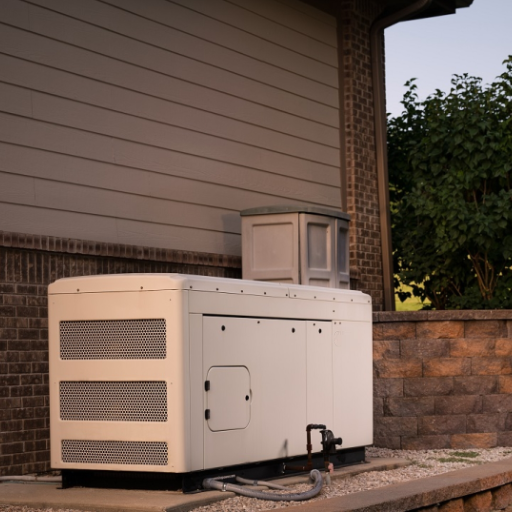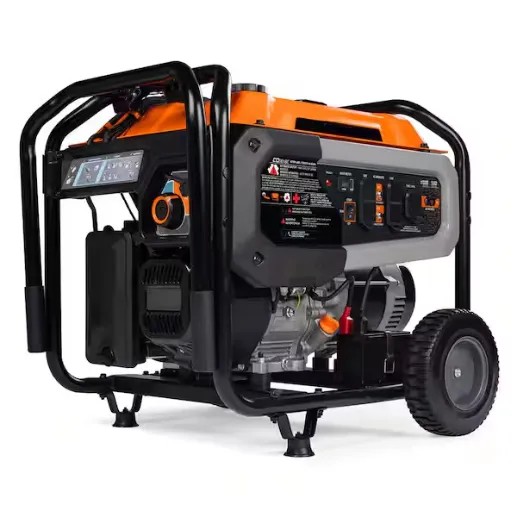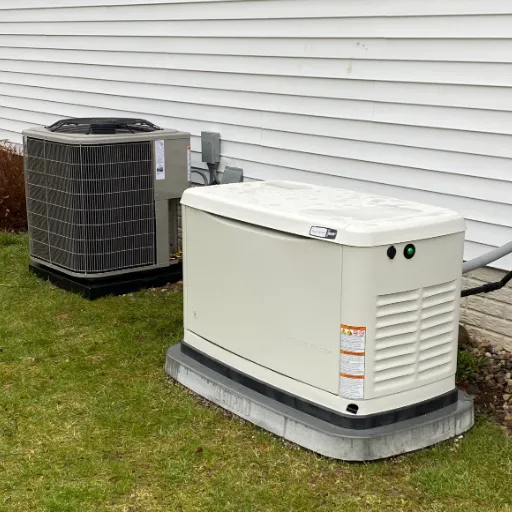Powering a whole house or commercial building with a backup generator is rated as one of the best ways to avoid unexpected blackouts. Suppose the outage is due to a storm, grid failure, or planned maintenance work. In that case, a reliable generator can keep essential machines running and give the user confidence that nothing is lost during the blackout. This guide will take you through everything you need to know about installing a backup generator, from understanding the benefits to navigating the installation process step by step. Whether you are a professional DIY enthusiast or a layperson exploring the possibilities, this detailed guide will empower you with the knowledge to make the right choice in protecting your power supply.
Understanding Backup Generators
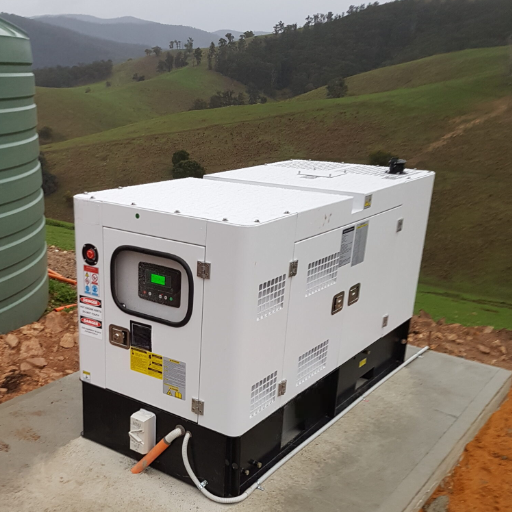
Backup generators are usually regarded as the machines that come in handy during an outage, powering the house temporarily till the main supply comes back. These machines detect power failure and switch on automatically, controlling essentials like cooling or heating systems, lights, and so on. There are two basic categories of backup generators, which are portable and standby. Portable generators are powerful and can be manually moved to different locations as needed, operating on gasoline as a fuel. Standby generators, on the other hand, are not movable; they are fixed and connected to the house’s electrical wiring, consuming either natural gas or propane. The energy requirements, budget, and the level of comfort desired determine the correct variant.
What is a Backup Generator?
The market for backup generators is always on the rise because of their significant role in keeping people and businesses running during outages. The provision of electricity during a primary power failure can be through automatic or manual mode, ensuring that daily life, work, or safety is not affected. For example, standby generators could power the entire house, including heating, cooling, medical, and refrigerating systems, thus providing comfort and significantly reducing the risk of spoilage and harm. Besides, power-consuming generator models are now a thing of the past. State-of-the-art production has made it possible for new types of units to be more fuel-efficient, noiseless, and eco-friendly, making them a necessity for residences and commercial units. A backup generator is one of the ways to gain confidence and continuity even when the outage is longer than expected.
Types of Generators: Standby vs. Portable
| Feature | Standby Generator | Portable Generator |
|---|---|---|
| Power Output | High, supports the entire household/business | Moderate, powers select devices |
| Installation | Permanent setup requires professional help | No permanent installation, easy to move |
| Activation | Automatic start during outage | Manual start needed |
| Fuel Type | Natural gas, propane, or diesel | Gasoline or propane |
| Run Time | Continuous with proper fuel supply | Limited by fuel tank capacity |
| Noise Level | Quieter due to housing and design | Typically louder during operation |
| Maintenance | Regular, professional servicing is recommended | Basic maintenance by the owner |
| Cost | Expensive initial and installation costs | Lower cost, accessible for smaller budgets |
| Portability | Stationary, fixed in one location | Lightweight, easy to transport |
| Best Use Case | Long outages or critical systems’ backup | Temporary power during emergencies |
Benefits of Installing a Home Standby Generator
Uninterrupted Power Supply
A home standby generator quickly detects power loss and turns on in seconds, making it a reliable power source during outages, exceptionally long ones caused by storms or grid failures.
Increased Home Value
The value of a property can be greatly improved by adding a home standby generator. Standby generator installations have been shown to yield up to 50% return on investment (ROI) among the options available when selling your property, thus making it attractive for those who may be looking for a reliable and powered residence.
Safety During Emergencies
A power failure at inconvenient times can occur without warning, but having a backup generator eliminates the additional problems that may arise. For instance, the family will not have to worry about lacking light, heating, or security systems during the cold season because of the backup generator.
Convenience and Automation
In contrast to portable generators, home standby generators are fully automated and connected directly to your electric grid. No manual setup or frequent refueling is required, as they are usually powered by natural gas or propane, which provides a constant supply.
Protection for Sensitive Electronics
Modern standby generators produce clean and reliable power, protecting delicate electronic devices like computers, TVs, and smart home systems from sudden power surges or drops during outages.
Cost-Efficiency Over Time
The costs of home standby generators vary from one manufacturer to another. They are initially the most expensive, but you might still end up saving over time. This happens when you factor in the areas of food spoilage, possible hotel stays during emergencies, and expensive damages from frozen pipes or sump pump failure.
Planning Your Generator Installation
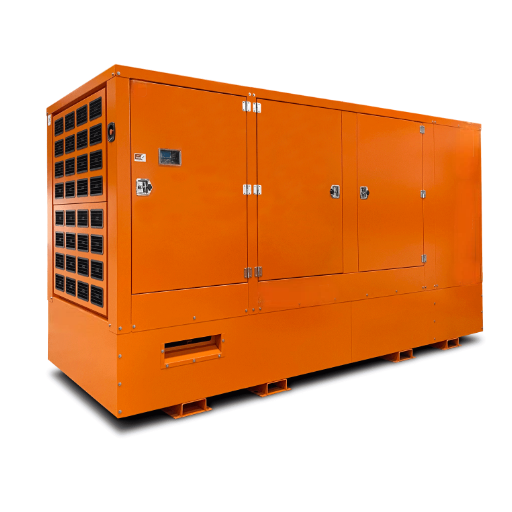
- Assess Your Power Needs: In case of a power outage, determine which appliances and systems are necessary for you to continue using. Usually, sources of food preservation, heaters, or cooler systems, and medical equipments are the most common ones to list in order of priority.
- Decide on a Location: Pick a place that is both safe and conforms with the regulations for the installation of your generator. The chosen spot should be an outdoor area sufficiently distanced from the house in all directions, ensuring that ventilation cannot occur through windows, doors, or vents, to prevent smoke from mixing with household air.
- Consult a Professional: Get the services of a licensed electrician or generator installer. This skilled person will not only check the electrical system of your house but also install it according to local building codes and safety standards.
- Choose the Right Size Generator: You need to budget for a generator that matches the power requirements you’ve already identified. It is always a good idea to mix the wattage of your appliances with that of the generator’s, as overloading may not only damage your appliances but also the generator itself.
- Budget for Installation: Talk with the installer to determine the installation costs, which could consist of permits, materials, and labor. Get the most accurate estimate possible.
Assessing Your Power Needs
Choosing the right emergency power source for your home is crucial, and to do so, you must first know how much power your household needs. The very first move should be to itemize all essential appliances and systems you can’t do without during a power interruption. Examples include refrigerators, heating systems, lighting, and medical equipment. Record the wattage for each item, which is not an arduous task because it can be found on most appliance labels or even in the user manuals. After you get this data, the first thing you have to do is add up all the wattages to determine your peak power requirements. To illustrate how power consumption can vary, consider a refrigerator consuming between 600 and 800 watts, which is on the low end of the spectrum, and a home heating system using 1500-2500 watts, which is a very high value. Consider also that it is a good idea to acknowledge the power surge, known as load demand, that the generator must manage for one to two seconds while the appliance is starting up. Providing additional capacity to the total reading helps the generator maintain its efficiency by working without any difficulty and still catering to sudden spikes in power demand.
When you assess your electricity demand correctly, it is not hard to choose a home generator or a backup power system that has the right size and specifications for your household. This approach not only avoids breakdowns but also ensures that power cut-offs go unnoticed, allowing you to remain comfortable all the time.
Choosing the Right Size Generator
Selecting a generator that will meet your needs requires considering your total power consumption, as well as the types of household appliances and machines you use. First off, name all the electrical apparatuses and gadgets that you cannot live without, such as the fridge, the heaters, the air conditioners, and the life-supporting equipment. Then, determine how much power each of them consumes, with great regard to both the nominal and the peak power for restricted applications like the air conditioning system or the pump, which starts when the button is pressed.
To exemplify, a usual refrigerator may need almost 600 watts constantly, but its starting wattage can go as high as 1,200 watts for a short while. The starting and running wattage of all the units you want to use together must be added up. To ensure all surges are appropriately managed, a buffer of 20-30% should be included. It’s a rule of thumb in the industry that even a small generator (3,000–4,000 watts) can meet basic household requirements, whereas larger models (5,000 watts or more) are intended for whole-house backup. Portable inverter generators are the top choice if you have many delicate electronic devices because they produce noiseless, robust AC power with minimal harmonic distortion.
Location Considerations for Installation
Before deciding where to install the generator, prioritize safety, followed by accessibility and compliance with regional rules. Generators should be placed outside in a location with a good air flow to minimize the risk of exposure to the fatal carbon monoxide gas they generate. One of the precautionary measures is to position the generator about 5 feet away from the building’s openings to prevent the entry of the poisonous exhaust fumes. The other key factor is that the location should be flat to ensure the generator is safe and free from annoying vibration problems. Installing a tent or barrier designed to cover the generator while allowing air to pass through it can be an option. The last and most important thing is to ensure that the generator’s settings comply with the country’s codes and regulations, and to follow the manufacturer’s recommendations to secure safe use and good performance.
The Installation Process
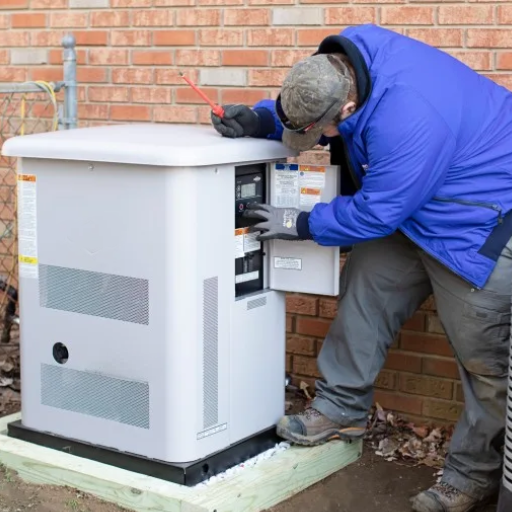
- Position the Generator
The best place for the generator is on a solid, even surface in a wide-open space that has good air circulation. Make sure you don’t make the distance between the establishments and openings too close to the generator to avoid accidents. - Install the Fuel Source
While connecting the generator to a fuel supply, such as diesel, natural gas, or propane, ensure the connections are tight and comply with safety protocols. - Set Up Electrical Connections
The use of a transfer switch is recommended to isolate the building’s electrical system from the generator. By doing this, you are not only preventing backfeed but also keeping both the generator and the electrical grid safe. - Ground the Generator
Comply with the rules of the area by correctly grounding the generator and decreasing the chances of accidental electrical problems. - Test the System
After completing the installation, proceed with a trial to ensure the entire operation is sound and all connections are tight. Have the manufacturer’s startup guidelines as your reference for safety. - Perform Routine Maintenance
Create a timetable for when the generator should be checked regularly to ensure the owner maintains it in optimal condition and running at maximum efficiency.
Preparing the Site: Concrete Pad and Gas Line
One of the most important aspects of the generator setup is the proper preparation of the installation site. The concrete pad, as the first recommendation, provides stability and a level base that protects the generator, preventing movements and reducing vibrations during operation. When choosing the pad, ensure the area complies with local building codes, which specify it should be positioned far from windows, vents, and doors for safety reasons. The pad should have a thickness, strength, and quality that can support the generator’s weight, typically using rebar for reinforcement, as this is usually the case.
In addition, it is vital to install a gas line to provide an uninterrupted fuel supply to the generator. Engaging a certified professional gas line installer is the way to go, as the installation will adhere to prevailing local regulations and safety standards. The type of gas lines and the material to be chosen need to align with the generator’s fuel requirements to ensure the best performance. At the same time, ensuring proper ventilation in the environment is crucial to prevent gas fumes from gathering in one place and causing significant accidents. These are all the necessary actions that, when integrated, will ensure a sturdy and safe structure for the system, allowing it to function for an extended period without incident and providing the owner with peace of mind.
Installing the Transfer Switch
The transfer switch is a crucial component for connecting your generator to your residence’s electrical system securely. It is similar to a switchboard, which separates the house power from the utility power, preventing any backfeed that could harm utility service workers or even damage the house. First off, find a nearby spot to your electrical service panel for the installation of the transfer switch. Make sure the switch is matched with the wattage and circuit of your generator.
Before installing the transfer switch, you must switch off the main power of the house to avoid any hazards. The transfer switch wiring should be carefully connected and secured, ensuring it is of the proper amperage for the generator-connected circuits. After the positioning, carry out a test of the transfer switch by producing a false power outage and ensure that the generator is seamlessly supplying the selected circuits with power. To maintain efficiency and reliability, it is also highly recommended to conduct regular checks on the system. The benefit of this is that the installation complies with local codes and safety standards, thus minimizing the chance of damage.
Connecting to the Breaker Box
In order to link the generator to the switchboard, a successful power supply shut-off must be performed to avoid any short-circuiting or current shocks. The only way to prevent overloading is to know exactly which appliances are to be powered by the generator and check their wattage. The best way to handle the connection with safety and efficiency is by using a separate interlock kit or a provided transfer switch. Connecting the generator power output to the switchboard inlet very cautiously is necessary to ensure both wiring and connection security. It is really necessary to mark circuits distinctly for total system operation when an outage occurs. The connections must be closely examined and maintained periodically to ensure that the safety and performance are at their best. Compliance with the local electrical codes and regulations should always be the priority in the process.
Safety Precautions and Regulatory Compliance
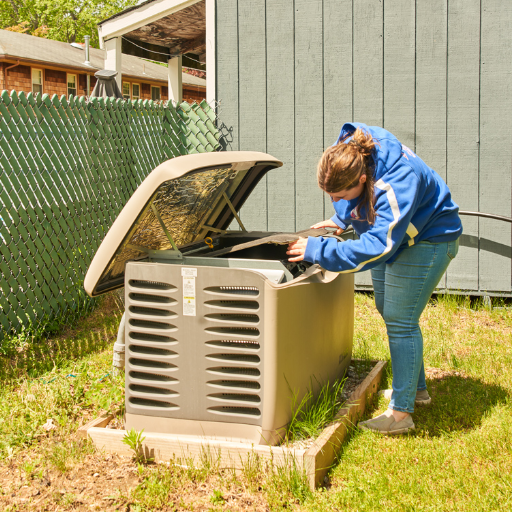
⚠️ Important Safety Notice:
It is of paramount importance to adhere to the safety rules and the laws of the land to prevent any form of danger, including electric shock, fire, and or damage to the equipment. It is always essential to ensure that the generator and the electrical system are in the off position before starting any work, such as making connections and performing maintenance. Use the right personal protective equipment (PPE), such as insulated gloves and safety goggles, to lessen the hazards.
To ensure full compliance with the requirements, you should always consult your local electrical codes (e.g., the National Electrical Code (NEC) in the U. S). Whenever there is a need for the services of licensed professionals to work on the wire connections, then do so. The proper function and safety of the system should be confirmed by the owner through testing. The installation and the entire process of following the rules will ensure the site is safe and compliant.
Understanding Local Regulations and Permits
The handling of local regulations and permits is said to be the most critical element of all projects, especially those involving electrical systems or construction. Safety, environmental compliance, and community standards are the main reasons regulations are established in various locations, such as cities or countries. For example, obtaining the necessary building or electrical permits is not possible without a good knowledge of local codes, which cover design, installation, and safety requirements.
Additionally, local authorities might ask for documentation such as site plans and detailed project descriptions to assess the correctness of the plans and get the approval process going. Furthermore, the project may require inspection at different stages to ensure that the designed safety and environmental standards are closely followed. However, the entire process can be made efficient by just staying ahead and in the loop with all the latest changes in laws, and being well-prepared in this way will also help in avoiding any hindrances and ultimately, fines. It is best to start the project by contacting the local planning department for area-specific advice and help.
Safety Tips During Installation
- ✓ Wear Proper Protective Gear
Electric safety is an essential consideration in the workplace, under OSHA’s (Occupational Safety and Health Administration) typical standard; the use of proper personal protective equipment (PPE) can decrease the total injury rate by up to half. - ✓ Follow Manufacturer Guidelines
Follow all the directions of the manufacturer and the installation manuals that come along with the equipment or materials. Misunderstanding the instructions is a common mistake that leads to errors and accidents during installation, which often occur in large companies. - ✓ Inspect Tools and Equipment
Inspect all tools and equipment meticulously before they are used. As an illustration, according to safety reports, defective power tools account for almost 8% of workplace injuries each year. - ✓ Establish a Clear Workspace
A tidy and secure work area is key to preventing workers from getting hurt, such as by tripping over cables or materials. A well-organized and tidy work area is essential in most companies. Because, in this kind of environment, it is easier for employees to move and do their work safely. - ✓ Turn Off Power Sources
Turn off all power sources before starting the installation of the electrical components. The tests are essential for safety because they prevent potentially fatal injuries. - ✓ Use Ladders or Scaffolding Safely
It is essential to adjust the ladders on stable ground and be sure that the scaffolding is built strongly and safely. The Occupational Safety and Health Administration (OSHA) findings state that ladder and scaffolding falls account for 20% of all fatal work injuries.
Common Mistakes to Avoid
- ✗ Neglecting Proper Training
Not checking workers’ qualifications may end in mistakes and incidents. Through regular training, the employees’ awareness of safety measures and correct equipment usage must be kept up. - ✗ Ignoring Site Inspections
Skipping essential site inspections could be disastrous, as some problems may go unnoticed. The risks can be eliminated if regular inspections are carried out using methods such as a highly reflective vest or any other safety product for workers. - ✗ Using Improper Tools or Equipment
Tools that are not appropriate for the task or that are not well-maintained can often cause injuries. It is a must that the right tools are used for the job and checked for functionality. - ✗ Overloading Scaffolding or Ladders
Surpassing the weight limit on the scaffold or the ladder makes it very unsafe. It is always better to load no more than what is stated in the manufacturer’s documentation regarding weight. - ✗ Failing to Wear Personal Protective Equipment (PPE)
Not having the proper protective gear, such as hard hats, goggles, and gloves, poses a significant risk to workers. Hard and fast rules have to be in place across the site for PPE usage. - ✗ Improper Handling of Hazardous Materials
Storing flammable liquids, poisons, or corrosives haphazardly can and usually does result in significant accidents. It is necessary to place a clear label and always adhere to material safety data sheets (MSDS) to prevent any hazardous incidents, in accordance with the law and other relevant practices.
Cost Considerations of a Backup Generator
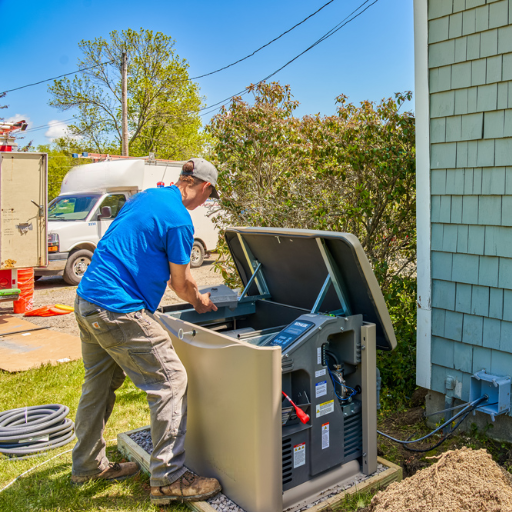
One must not forget about both direct and indirect costs when analyzing cost aspects. In general, direct costs pertain to the project’s requisites such as materials, labor, and equipment. On the other hand, indirect costs are made up of overhead, compliance with safety regulations, and time lost due to accidents or improper management. The best way to contribute to cost control is by budgeting correctly, keeping a close eye on all the money spent, and using effective measures, such as the training of employees and the maintenance of the equipment in good condition to avoid any accidents or delays. In this way, companies not only avoid financial risks but also make sure that the project runs smoothly.
Average Cost to Install a Standby Generator
The prices for installing a backup generator are not fixed; they can vary significantly based on several criteria, such as the generator’s size, brand, installation complexity, and location. The cost of getting a standby generator completely installed can be anywhere in the range of $5000-$10000, according to homeowners’ estimates. Even those units designed for just a few power needs may cost around $3000; nevertheless, some of the larger generators produced for supplying electricity to entire homes or large commercial buildings might be even higher than $15000.
The list of installation costs includes labor, electrical wiring, permits, and extra gear like transfer switches, which could also be included in the bill. One thing to remember is the ongoing maintenance of the generator. Usually, it costs no more than $150-$300 a year and is done to ensure the generator is working well.
Factors Affecting Installation Costs
Many factors can affect the installation costs of a generator. For instance, the price depends on the type and size of the generator, the complexity of the installation, and the rules in your local area. When it comes to larger or more powerful generators, they will most likely require more installation work and time, as well as more material, all of which result in higher costs. Then, the location of the installation can also be a deal-breaker, as the labor cost directly depends on the residence’s area, including access, geographical features, and proximity to the main electrical panel. Installing a generator may incur expenses from building code and pay-once-license agencies, which vary according to different regions. Moreover, the necessity of upgrading your current electrical system, such as installing a transfer switch or modifying wiring, could also mean you have to spend more. In short, it is vital to run a correct budget by including these variables and factors for your generator installation.
Budgeting for Maintenance and Fuel
It’s essential to consider two things when making a plan for the generator expenses: the regular maintenance of the generator and the fuel costs. Regular maintenance will guarantee the system’s reliability and extend its life cycle, typically involving services such as oil changes, filter renewals, and periodic checks. The cost for the maintenance of such systems may vary from $100 to $300, depending on the type of generator and how it is used.
Fuel costs will vary based on the generator’s fuel type, capacity, and how often it operates. To give an example, propane can be priced at $2 to $3 per gallon, and diesel cost varies with the market. The 20-kilowatt generator at half capacity runs about 2 gallons per hour, which implies the bills will increase significantly if it is on for a prolonged time. Besides, other costs to consider include fuel storage and shelf life, especially for a gasoline-powered generator that requires proper storage to prevent deterioration.
Getting to the core of these components helps create a more comprehensive budget that will keep you ready for both one-time and ongoing generator-related expenses. Being up-to-date with fuel prices and equipment maintenance can also save you a lot of money in the long term.
Reference Sources
The effect of electric blackout on the operation and productivity of small manufacturing enterprises
Key Findings: This study explores how electric blackouts impact the productivity of small manufacturing enterprises. It highlights the importance of backup generators in mitigating power reliability issues.
Identification of hazards and risk assessment for a 40kVA diesel powered lighting set
Key Findings: This research identifies potential hazards and risks associated with the installation and operation of diesel-powered generators. It provides recommendations for safer installation practices and risk mitigation strategies.
Frequently Asked Questions (FAQs)
❓ How do I install a transfer switch for my generator?
It is a good practice to always start by checking with the local building department in order to know the requirements for installing a transfer switch for a generator. Essentially, the whole process is exactly about connecting the transfer switch to the main electrical panel. This means that through the switch, it is simply the process of switching and using the generator when there is no utility power and the power is automatically disconnected. It is quite advisable that a licensed electrician should be hired to do the installation to make the area safe and follow all the regulations and requirements. The transfer switch location must first be identified, then wires should be laid from the main panel to the switch and, also, proper grounding has to be done. It should be noted that the electrical work is the most important part and, therefore, it is recommended that the work be done by an electrician.
❓ What is the installation process for a home standby generator?
❓ Can I do a DIY project to install my standby generator?
Even though a part of the backup generator installation can be a do-it-yourself project, for example, securing the place and dealing with the site, you still have to engage a professional electrician in the process of setting up. This means that the professional will connect the generator to the panel and set up a transfer switch, not to mention that the job must also conform to the electrical safety and building code requirements of the locality. If you are an electrician by trade you can offer to do the manual transfer switch remotely, however, it is essential to take a cautious approach due to the hazards associated with the same. To be safe and have a robust system, it is wise always to have a technician, particularly for homeowners.
❓ How do I maintain my standby generator?
Ready to Install Your Backup Generator?
Follow this comprehensive guide to ensure a safe, efficient, and compliant installation that will keep your home powered during any outage.



